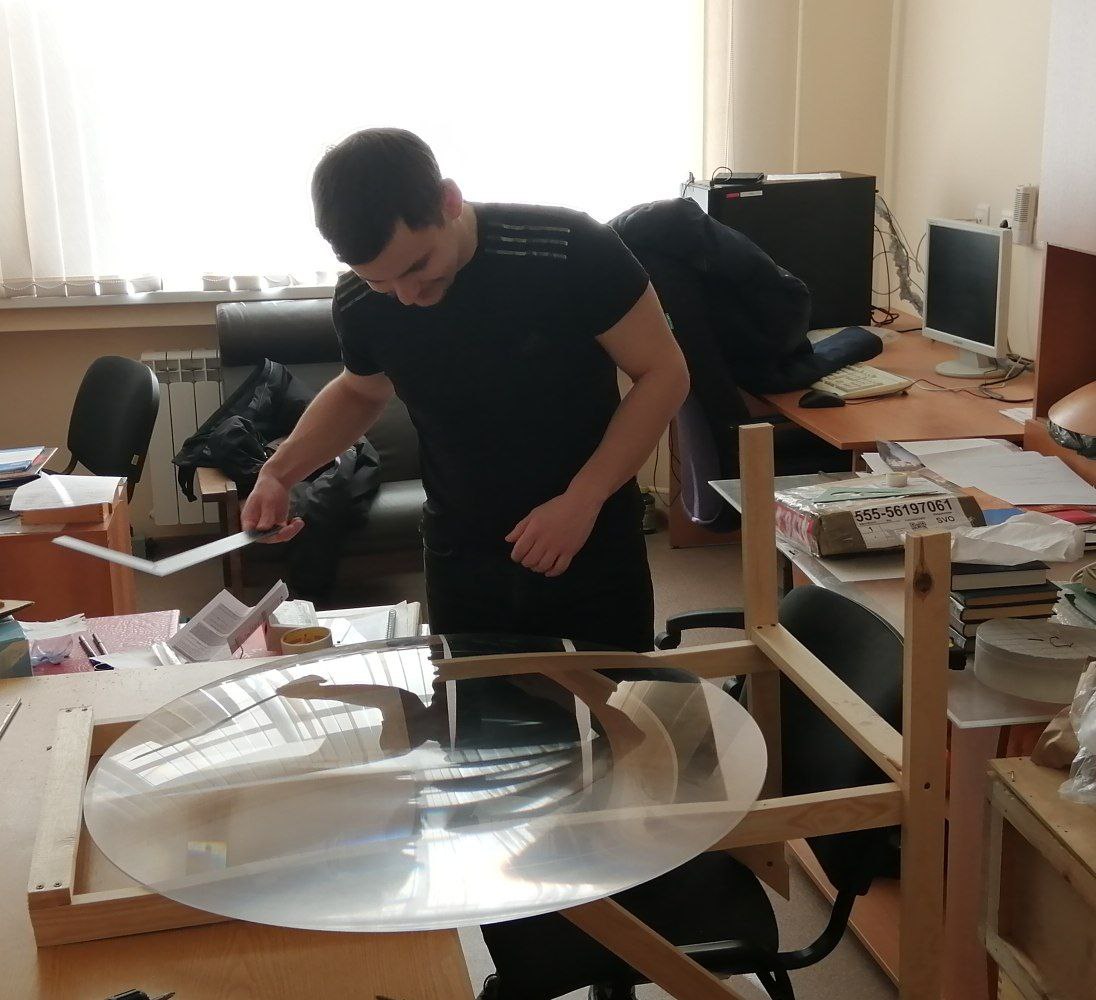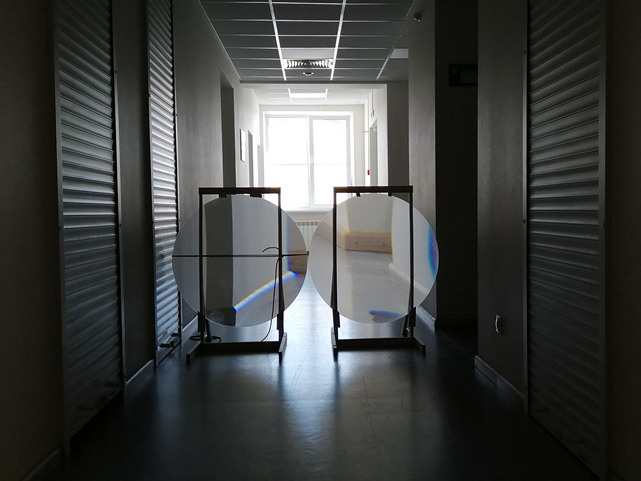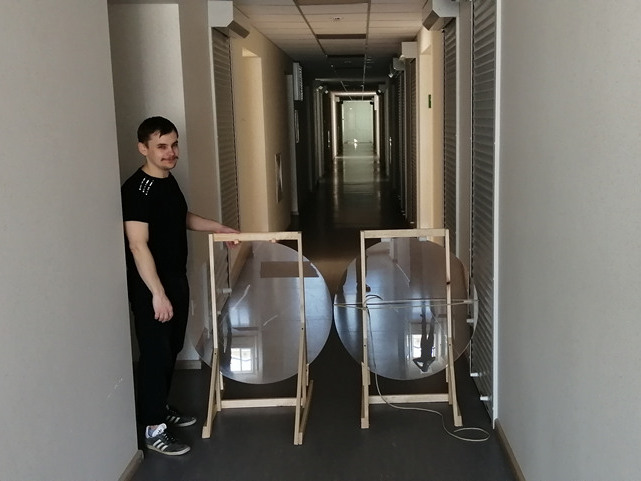Unique Lenses for the Unique Facility
The TAIGA project in which DLNP researchers are actively involved is aimed at studying the high-energy region of the gamma radiation spectrum of the Universe. The main objective of the project is searching for the origins of cosmic rays in the range between 1014 and 1018 eV. The experiment is located near the Southern edge of Lake Baikal on the astrophysical site in the Tunka valley (Republic of Buryatia) and comprises several facilities that measure parameters of extensive air showers resulting from interactions of cosmic and high-energy gamma rays with the atmosphere.

 Aleksandr Blinov, a DLNP senior laboratory assistant and a postgraduate student of Dubna University | Photo by Artur BorodinThese measurements allow reconstructing the direction of incoming cosmic rays and determining their type and energy. The measurement accuracy is increased by combining different detection systems. Simultaneously, the studies are being performed with a prototype of a new IACT Gamma Telescope in order to enhance the observatory sensitivity by using new optical sensors and by increasing effective array areas up to a factor of 10.
Aleksandr Blinov, a DLNP senior laboratory assistant and a postgraduate student of Dubna University | Photo by Artur BorodinThese measurements allow reconstructing the direction of incoming cosmic rays and determining their type and energy. The measurement accuracy is increased by combining different detection systems. Simultaneously, the studies are being performed with a prototype of a new IACT Gamma Telescope in order to enhance the observatory sensitivity by using new optical sensors and by increasing effective array areas up to a factor of 10.
 Photo by Artur Borodin
Photo by Artur Borodin
 Aleksandr Blinov | Photo by Artur Borodin
Aleksandr Blinov | Photo by Artur Borodin
The study of extensive air showers started on the astrophysical site in the Tunka Valley in the mid-1990s. The first array comprised four air Cherenkov light detectors. In 1999, there were already 13 detectors, and 25 in 2003. In 2009, a new Tunka-133 array was launched with 133 detectors located across the area of about one square kilometre. In 2011, this array was extended by 6 clusters, 7 detectors in each. Since 2012, other detector systems have been installed, such as Tunka-Rex and Tunka-HiSCORE. The Tunka-HiSCORE detector increased the angular resolution in the detection of the incoming direction of extensive air showers due to the excellent accuracy of synchronization. In 2014, the Tunka-GRANDE scintillation array was constructed, and in 2015, the installation of the Cherenkov Gamma Telescope TAIGA-IACT was launched. Now, the multielement matrix photodetector of several hundreds of photomultipliers allows identifying the nature of primary particles ― whether these are gamma-caused events or hadron-nucleus events ― by analyzing images of extensive air showers. Simultaneous operation of the Tunka-HiSCORE and TAIGA-IACT detectors results in a synergetic effect searching for the origins of cosmic rays in the energy range between 1014 and 1018 eV.
Considerable difference between fields of view of these two detectors causes considerable difference in accumulated event statistics. To compensate this drawback, it was decided to construct a Cherenkov telescope with a wide field of view.
The first step was manufacturing a single plastic lens 820 mm in diameter. A prototype detector with receiving elements based on silicone photomultipliers (SiPMs) will be tested using this lens. The extended dynamic range of these detectors will provide the opportunity to substantially increase useful time of the Cherenkov telescopes. The new event detection system will allow recording the precise time of an event and its timebase.
After manufacturing the Cherenkov telescope with a lens and a SiPM-based detector and its field testing, a second step will be adding the Schmidt-camera system having the unsurpassed field of view with uniform imaging quality distribution.
One part of the project is being performed at Dubna University and requires specialists in digital fabrication and programming control machine tools. To date, the R&D stage on the development of a technology of milling large-area optical surfaces has been completed, and workpieces prepared and put through other lens manufacture stages at DLNP.
We should note that a lens of such a large diameter, 820 mm, is difficult to manufacture ― there are just few factories appropriately equipped for manufacturing such optical components.
This year, the fabrication of an optical system with elements about 600 mm in diameter is scheduled. And after tests, if successful, the diameter is planned to be extended to 1500 mm.
Artur Borodin,
a senior researcher
of the DLNP Experimental Department of Particle Physics

